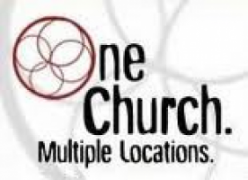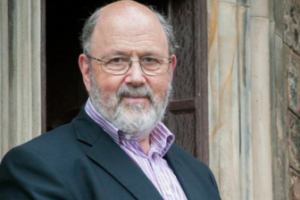Over the course of the next few weeks I’ll be looking at multi-site churches. They represent an increasingly popular phenomenon, aided in no small part by advances in technology. In this first installment, we’ll look briefly at what multi-site churches are, with future installments looking at the arguments in favor of and against using such a medium as a way of doing church.
First off, let’s define the terms. According to The Multi-Site Church Revolution, a 2006 book by authors Geoff Surratt, Greg Ligon, and Warren Bird, “A multi-site church is one church meeting in multiple locations—different rooms on the same campus, different locations in the same region, or in some instances, different cities, states, or nations. A multi-site church shares a common vision, budget, leadership, and board.” As you can see from the definition, there are a number of different ways in which multi-site can be done. In all likelihood, some of the churches you are familiar with—perhaps even your church—participates in something that might fall within this definition. The common thread between each of these different models is one church, multiple locations. Let’s take a look at some of these:
Different rooms on the same campus. This model consists of multiple buildings or venues on the same campus which are all watching the same sermon at the same time (or with a slight delay). The audience in one building is watching the service, or at least the sermon, in person, while the other audiences watch a video feed. In some instances, each building will have its own worship team and only the sermon will be via video. An example of this format is Saddleback Church in Southern California. Some churches adapt this format because of spacing issues. Not everyone can fit into the main building, so other buildings on campus function as a sort of overflow. Others do this in order to format the worship (read: music) portion of their service to fit different genre tastes.
Different locations in the same (or distant) region. This is the format we typically think of when we hear the term “multi-site church”. Two examples of this are Mars Hill Church, located (for the most part) in the Seattle, Washington area (pastored by Mark Driscoll) and Bethlehem Baptist Church in Minneapolis, Minnesota (pastored by John Piper). Each of these churches does the multi-site thing in their own unique way.
At Mars Hill, preaching responsibilities are shared between the main preaching pastor (Driscoll) and the other teaching pastors. Most of the time, Driscoll will preach live from one campus while the other campuses watch a video feed of the same sermon. The rest of the time, the other pastors will preach live to the other campuses individually.
At Bethlehem Baptist, the preaching pastor (Piper) preaches Saturday night to the congregation at the church’s Downtown location. That sermon is recorded. On Sundays, he rotates preaching live between the various campuses. The campuses he’s not preaching at on a given Sunday watch the video that was recorded at the Saturday service.
Both of these churches follow the different locations model, with their own nuances.
Different teachers at different locations. In this model, each of the various campuses of the multi-site church has a sermon delivered live by one of the pastors. This church doesn’t employ the use of video streaming. Each of the campuses, though they seem to function as individual churches in a number of ways, are governed by the same leadership team. Though I hate to bring business metaphors into a church discussion, think of a company that has multiple offices. Each office is doing its own functions, functioning autonomously in a sense, but each is under the same board of directors. An example of this type of church is Community Christian Church in the Chicago, Illinois area.
As we begin our look at multi-site churches, it’s important to note just how diverse this practice is. Before we could defend or critique the multi-site model, we needed to have a better understanding of it. In future weeks we’ll look at the opportunities and challenges multi-site presents. Stay tuned.





1 Comment
Leave your reply.